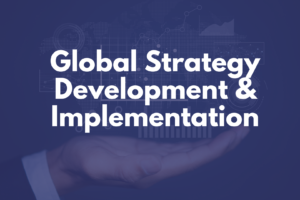
BMG872 Assignment:Global Strategy, Development and Implementation
BMG872 Assignment:Global Strategy, Development and Implementation
1. Introduction
It is Apple that takes the lead in technology innovation. Apple Inc. is a technology and innovation company based in Cupertino, California. In the intersection of the computer world and consumer electronics, its creations have changed the world. Apple made $365 billion in 2022, a new record. Transformation in this arena showed Apple commanded the world and had an unmatched ability to acquire markets and consumers.
Apple has amazing 170 countries. The company’s international expansion bears testimony to its dedication to all cultures. From the urbanized streets of Tokyo to the hamlets of New Zealand, is the effect of Apple global. Apple employed 147,000 foreigners. Apple’s garagelike rise to world power is testament to their penchant for innovation and customer service. With the expansion of Apple all over the world, its impact on our living life and technology has become more profound. This online giant is only starting to expand worldwide and include new services.
1.1 Porter’s Five Forces
Porter’s (1979) Five Dynamics model is a strategic competitor analysis of the sector. This paper analyses the Smartphone industry with a focus on Apple Inc. The smartphone industry is competitive because of constantly changing technology and customer preferences. After looking at all five criteria, let’s look into the competitive environment.

1.2 Threat of New Entrants
1.2.1 Assessment:
Difficult and extremely hard for upstart companies to penetrate.
1.2.2 Economies of Scale:
Apple is able to enjoy economies of scale because of the enormous volume of production. It would be difficult for competitors to Apple’s price advantage.
1.2.3 Capital Requirement:
The startup costs of competing in the laptop and smartphone markets are very high.
1.2.4 Brand Identity:
Apple, for example, has a strong brand image that new entrants would struggle to overcome.
1.2.5 Distribution Channels Availability:
Competing against Apple is a tough task because it has an extensive distribution network in place including its own retail stores.
1.2.6 Proprietary Technology:
Apple’s patents and proprietary technology make it difficult for the competition to copy their work.
1.3 Bargaining Power of Buyers
1.3.1 Differentiation:
The bargaining power of buyers is curtailed by Apple’s products.
1.3.2 Switching Costs:
Once customers get into Apple, it may be expensive and hassle-free to switch platforms.
1.3.3 Volume of Buyers:
Apple has a large group of enthusiasts.
1.3.4 Price Sensitivity:
Due to new Apple’s value proposition, some customers are less sensitive to price.
1.3.5 Backward Integration:
Buyers rarely use backward into smartphone or computer manufacture.
1.3.6 Assessment:
Moderate to Low level of buyer bargaining power
1.4 Supplier Power of Negotiation
1.4.1 Number of Suppliers:
For some components, Apple can only use a handful of vendors.
1.4.2 Unique Services:
A specific example of a unique and hard-to-make part is the chips that are used in the iPhone.
1.4.3 Switching Costs:
If Apple were to change suppliers, it would incur huge costs.
1.4.4 Importance of Volume:
Apple’s huge purchases are extremely coveted by vendors.
1.4.5 Threat of Forward Integration:
One of Apple’s suppliers, Foxconn, is a manufacturer that has no plan or resources to vertically integrate with Apple’s operations.
1.4.6 Assessment:
High to High bargaining power of suppliers, depending on the component.
1.5 Threat of Alternative Products
1.5.1 Functionality:
Tablets and smartphones can be used as a substitute as they perform similar functions.
1.5.2 Price:
Other markets may be lured by cheaper cellphones or computers.
1.5.3 Propensity to Substitute of the Consumer:
Apple’s market share also gives it the capacity to slow rates of customer switching.
1.5.4 Technological Changes:
Technology is developing rapidly and new alternatives may be available.
1.5.5 Availability:
These are easily available in stores.
1.5.6 Assessment:
Moderate threat of substitutes
1.6 Competition with Other Existing Competitors
1.6.1 Number of Competitors
Some of the competitors of Apple in the smartphone market are Samsung, Google, and Huawei.
1.6.2 Industry Growth Rate
Smartphone competition could intensify as growth declines.
1.6.3 Product Differentiation
Apple’s products are different from the rest, but so are its competitors’.
1.6.4 Exit Barriers
Exit costs may cause competition to develop.
1.6.5 Diversity of Competitors:
Different competitors have different strengths and weaknesses, and available tools.
1.6.6 Assessment:
Extreme competition between the existing competitors
1.7 More in-depth Discussion of Selected Forces
1.7.1 Threat of New Entrants
Economies of Scale and Production Volume – This is where we examine what happens to production costs as the production volume increases.
Economies of scale are afforded to Apple’s enormous manufacturing. A large mass of production and distribution of fixed cost on a large number of goods reduces unit cost. New entrants need to match production levels, which is very hard to do without going under bankruptcy sooner or later, mainly because of the economies of scale. (Barney & Hesterly,2012).
1.7.2 Proprietary Technology and Barriers to Entry
Apple has patents and proprietary technologies that provide it with a commercial advantage. The iPhone and iPad use an A-series of transistors, which the company makes in-house and are notoriously hard to come by. Because of these technology challenges, the competition will be difficult for future rivals to compete with Apple. (Apple Inc, 2021).
1.7.3 Capital Requirement and Brand Identity
As well as in the computer industry, R&D and marketing, and distribution require significant investments to penetrate the smartphone market. The competition is even more challenging for new entrants who have to penetrate the brand awareness of Apple and its loyal customers. (Apple Inc, 2021).
1.7.4 Availability of Distribution Channels and Retail Network
There are authorized Apple stores in addition to the official Apple websites and stores. Due to distribution, new entrants might not be able to access as many customers as existing companies.
1.7.5 Assessment
Due to Apple’s high capital requirements, strong brand name, economies of scale, and patented technologies, the company is exposed to a High risk of new competitors.
1.8 Bargaining Power of Suppliers
1.8.1 Dependency on Key Suppliers
Foxconn plays a critical role in Apple’s supply chain as it is responsible for production and procures important inputs such as screens and memory chips. As a result of Apple’s dependency on them, Apple’s suppliers will have greater bargaining power (Dyer & Singh, 1998).
1.8.2 Switching Costs and Custom Components
Changing suppliers is costly and could involve retooling production lines, as well as quality control issues. The iPhone’s proprietary semiconductors illustrate how hard vendor switching is without hurting quality or product differentiation.
1.8.3 Supplier Diversity and Volume
Apple has lots of suppliers that love its orders. Apple’s bargaining position is good because of interdependency. This is because suppliers might not rely solely on Apple for their business, for they may have other customers or cash.In addition to this, if the suppliers have other customers or cash, this would make them less reliant on Apple.
1.8.4 Assessment
Apple’s suppliers generally bargain. Because of its size and reputation, Apple may have the ability to negotiate with suppliers. Apple’s use of a limited number of manufacturers and custom components limits its advantage. (Apple Inc, 2021).
1.9 Potential Market : Apple’s Apple ID Number Market:
There are many reasons why Apple stands in a good position in the smartphone industry:
1.9.1 Innovation and Branding
Apple’s product innovation and brand value are a significant competitive advantage. Because of this, the company is able to charge for higher prices and keep consumer loyalty. (Apple Inc, 2021).
1.9.2 Ecosystem
Apple’s ecosystem includes hardware, software, and services, which means customers are more engaged and loyal to the brand. Users’ commitment to an ecosystem increases the cost of switching to another provider.
1.9.3 Good Relationship with Suppliers
Apple is large and powerful enough to form strategic agreements with suppliers to ensure a steady supply of key components. This means more reliable operations and supply chain interruptions.
1.9.4 Entry Barriers
The high startup costs, complicated technology, and market leadership deter key competitors from entering the market. This consistency helps to keep Apple safe from potentially dangerous new competitors.

